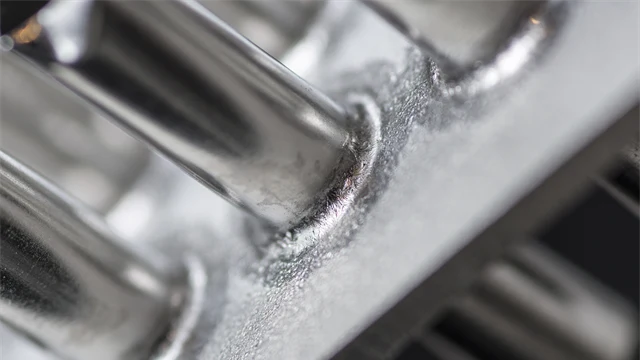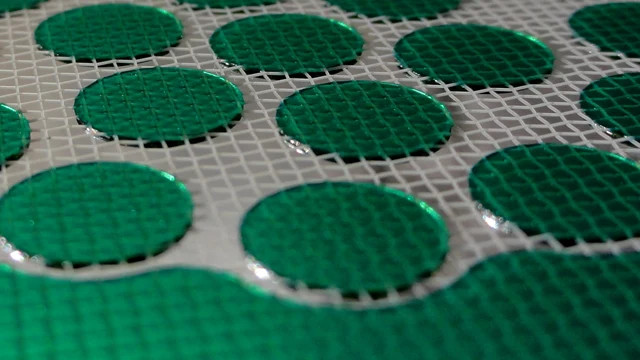
製品
ステンレス系ろう付け合金
ステンレス系ろう付け合金は、特に従来の銅ろう付けをステンレス鋼ろう付けに置き換える用途で有名です。これには、銅の含有量を最終用途で最小レベルに保つ必要がある、オイルクーラーやろう付けプレート熱交換器(BPHE)などの用途が含まれます。高温の腐食性環境では、オイルクーラー内でエンジンオイルに銅イオンが浸出する、またはろう付けプレート熱交換器の液体に銅イオンが浸出するリスクがあります。オイルクーラーの場合、冷却系統の性能と寿命に影響を与えるため、銅イオンの浸出は一般的に望ましくない現象です。
飲料水用のろう付け部品では、水に含まれる銅イオンの最大許容含有量を制限する厳しい規制が設けられており、代替ろう付け材料の必要性が加速しています。ステンレス系ろう付け合金は、飲料水に対する金属イオン浸出に対する技術的利点があるため、従来のニッケルや銅ろう付け材の両方と比較して優れています。
BrazeLet® F300 および BrazeLet F86 は、真空または保護雰囲気におけるステンレス鋼基材に良好な濡れ性を有する、ステンレス系ろう付け合金です。高レベルの合金化クロム(Cr)は、優れた高温ガスおよび耐酸性耐食性をもち、熱交換器、商用車のステンレスオイルクーラー、EGRクーラーなどのろう付け用途に適しています。2つのろう材の主な違いは接合部強度と、推奨ろう付け温度です。BrazeLet F86 は BrazeLet F300 よりも高い接合部強度を提供しますが、ろう付け温度を若干高くする必要があります。
Höganäs は、標準的なステンレス鋼ろう付け合金に加えて、要望に応じて、お客様と協力してカスタマイズした合金を開発する能力と経験があります。既存の製品ポートフォリオとは異なる特性を持つろう付け材料が必要である場合は、お気軽にお問い合わせください。
BrazeLet® ステンレス系ろう付け合金
BrazeLet F300
BrazeLet® F300は、極限環境で動作する部品用の独自のステンレス基(鉄クロム合金)ろう付け材料です。 独自の化学組成は、ニッケル基の高性能ろう付け材料と同様の耐食性や接合強度などの特性を提供しますが、 より低コストの金属を使用するため、費用対効果の高い代替手段となります。
BrazeLet F300は優れた濡れ性、低いろう付け温度、高強度で耐食性および耐酸化性の高い均一な接合部を形成するため、一般産業用や自動車用の熱交換器用途に適しています。
飲料水やオイルクーラーなどの用途で、銅を含有しないろう付けの需要が増加しています。本製品は、このような用途における第一の選択肢です。
特長
- 費用対効果が高い
- 様々な接合幅に対応
- 耐食性
- 高い強さ
成分
ISO 3677、B-Fe39CrNiCuPSi-1000/1070
不純物はISO 17672
ANSI/AWS A5.8の規格に準拠
溶融温度範囲
1000~1070°C
最低ろう付け温度
1100°C
BrazeLet F300DW-9007
BrazeLet F300DW-9201
BrazeLet F300P-9012
BrazeLet F300R-8501
BrazeLet F300R-9003
BrazeLet F86
お問い合わせ

セールス・技術サポート
プライバシー保護に関する方針
私は、ヘガネスが、私と連絡をとる目的で、私の個人データを利用することに同意します。 また、私の連絡先情報をニュースレターやその他関連情報といったマーケティング目的に使用することに同意します。 データが第三者と共有されることはありません。 また、16歳以上であることを認めます。
個人情報の取扱いに関する詳細は、弊社のプライバシー保護方針でご確認いただけます。


